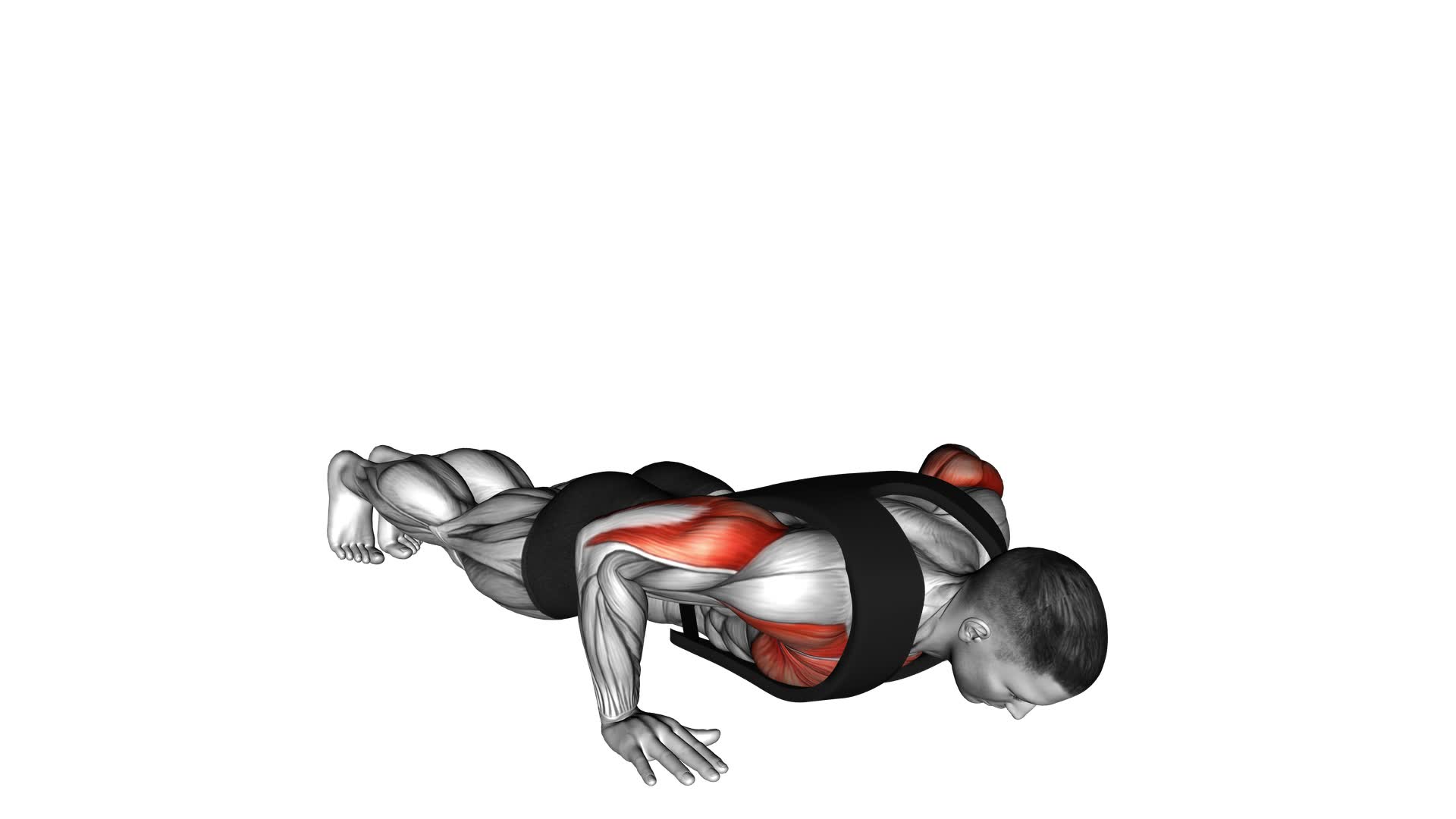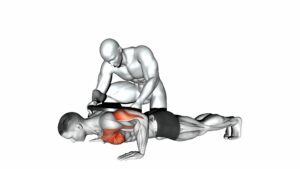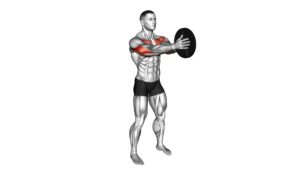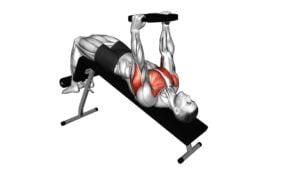Weighted Push-Up With Vest – Video Exercise Guide & Tips

Are you looking to take your push-up game to the next level? Then the weighted push-up with a vest is the exercise for you!
Watch This Exercise Video
This challenging variation adds extra resistance to target your chest, arms, and core muscles.
In this video exercise guide, we'll show you proper form and technique, tips for progression and variation, and how to choose the right weighted vest for your fitness level.
Get ready to amp up your push-up routine and achieve new strength gains!
Key Takeaways
- Weighted push-ups with a vest enhance muscle strength and endurance.
- Proper form and technique include maintaining a straight line from head to heels and engaging core muscles.
- Alternative exercises for weighted push-ups include regular push-ups, incline push-ups, and push-ups with resistance bands.
- When choosing a weighted vest, consider fitness level, exercise goals, and opt for adjustable vests for versatility.
Benefits of Weighted Push-Up With Vest
You can experience enhanced muscle strength and endurance by incorporating a weighted vest in your push-up routine. Adding extra weight to your body during push-ups increases the demand placed on your muscles, resulting in improved upper body strength. The additional resistance provided by the weighted vest forces your muscles to work harder, leading to greater muscle activation and development.
As you perform push-ups with a weighted vest, your muscles are required to generate more force to lift your body off the ground, which leads to increased muscle activation in the chest, shoulders, and triceps. This increased muscle activation stimulates muscle growth and helps you build a stronger upper body.
Not only does the weighted vest improve upper body strength, but it also enhances endurance. By challenging your muscles with additional weight, your body adapts by becoming stronger and more resistant to fatigue. This means that you'll be able to perform more reps and maintain proper form for a longer period of time, ultimately improving your overall endurance.
Now that you understand the benefits of incorporating a weighted vest in your push-up routine, it's important to focus on proper form and technique to maximize your results and minimize the risk of injury.
Proper Form and Technique
To ensure proper form and technique during weighted push-ups with a vest, focus on maintaining a strong and stable core. This will help you execute the exercise correctly and prevent any injuries. Here are some important tips to keep in mind:
- Keep your body in a straight line from your head to your heels. Avoid sagging your hips or arching your back.
- Engage your core muscles by pulling your belly button towards your spine. This will help you maintain stability throughout the exercise.
- Keep your elbows tucked in close to your body as you lower yourself down. This will protect your shoulders and allow for proper activation of the chest muscles.
- Breathe in as you lower your body down and exhale as you push yourself back up. This will help you maintain proper control and rhythm during the exercise.
Common misconceptions about weighted push-ups with a vest include thinking that more weight is always better. It's important to start with a weight that challenges you but still allows you to maintain proper form. If the vest is too heavy, it can compromise your technique and increase the risk of injury.
If you're looking for alternative exercises to the weighted push-up with a vest, you can try regular push-ups, incline push-ups, or push-ups with resistance bands. These exercises will still target your chest, shoulders, and triceps while providing a different level of challenge.
Now that you know how to perform weighted push-ups with a vest with proper form and technique, let's move on to the next section and discuss choosing the right weighted vest.
Choosing the Right Weighted Vest
To ensure you select the appropriate weighted vest, consider factors such as your fitness level, exercise goals, and desired level of resistance. When choosing a weighted vest, it's important to find one that suits your needs and preferences. There are several factors to consider in order to make the right choice.
Firstly, consider your fitness level. If you're a beginner or have limited upper body strength, it's advisable to start with a lighter weighted vest. This will allow you to gradually increase the resistance as your strength improves. On the other hand, if you're an advanced athlete or have been training for some time, you may opt for a heavier vest to challenge yourself further.
Next, think about your exercise goals. Are you looking to build strength, increase endurance, or improve overall fitness? Different weighted vests offer varying levels of resistance, so choose one that aligns with your specific goals.
Lastly, consider how the weight can be adjusted. Some vests come with fixed weights, while others allow you to add or remove weight as needed. Adjustable vests are more versatile and can be customized to suit your desired level of resistance.
When it comes to the best brands, there are many options available. Some popular choices include Hyperwear, Cross101, and RUNFast. These brands offer high-quality vests that are durable and comfortable to wear.
Common Mistakes to Avoid
Avoiding common mistakes is crucial when performing weighted push-ups with a vest. To ensure you get the most out of this exercise and prevent any injuries, here are some common mistakes to avoid and tips for improvement:
- Incorrect hand placement: Placing your hands too wide or too close together can put unnecessary strain on your shoulders and wrists. To avoid this, position your hands slightly wider than shoulder-width apart, with your fingers pointing forward.
- Sagging hips: Allowing your hips to sag or raise too high during the exercise can compromise your form and reduce the effectiveness of the push-up. Maintain a straight line from your head to your heels throughout the movement by engaging your core and glutes.
- Lack of full range of motion: Partially completing the push-up by not lowering yourself all the way down or not fully extending your arms can limit the benefits of the exercise. Aim to lower your chest to the ground and fully extend your arms at the top of each push-up.
By avoiding these common mistakes and focusing on proper form, you can maximize the benefits of weighted push-ups with a vest.
Now, let's move on to the next section and explore some tips for progression and variation to keep challenging yourself.
Tips for Progression and Variation
Now that you have avoided common mistakes and focused on proper form, let's explore some tips for progressing and varying your weighted push-ups with a vest.
To continue challenging yourself and making progress, you can employ various progression techniques. One effective technique is to gradually increase the weight of the vest. Start with a lighter weight and gradually add more as you get stronger. This will help you build strength and endurance over time.
Another progression technique is to change the tempo of your push-ups. You can try performing them at a slower tempo, focusing on the eccentric (downward) phase of the movement. This will increase the time under tension and further challenge your muscles.
In addition to progression techniques, there are advanced variations you can incorporate into your weighted push-up routine. One option is to elevate your feet on a bench or step, which will increase the difficulty and engage your upper chest muscles more.
Another variation is the single-arm weighted push-up. This involves placing one hand on the ground and the other on the weight vest, performing the push-up with one arm at a time. This variation targets your chest and core muscles in a different way and requires greater stability.
Remember to always listen to your body and progress at a pace that's comfortable for you. By incorporating these progression techniques and advanced variations, you can continue to challenge yourself and make progress in your weighted push-up routine.
Frequently Asked Questions
How Long Should I Rest Between Sets of Weighted Push-Ups With a Vest?
To get the most out of your weighted push-ups with a vest, it's important to give yourself proper rest periods between sets. Resting allows your muscles to recover and helps prevent fatigue. The length of your rest period will vary depending on your fitness level and goals.
Generally, a rest period of 1-2 minutes is recommended. This allows enough time for your muscles to recharge while still keeping your heart rate elevated. Remember, weighted push-ups offer numerous benefits, including increased strength and muscle growth.
Are There Any Specific Warm-Up Exercises I Should Do Before Attempting Weighted Push-Ups With a Vest?
Before attempting weighted push-ups with a vest, it's important to warm up your muscles and prepare your body for the exercise. Incorporate specific warm-up exercises like arm circles, shoulder rolls, and chest stretches to loosen up the upper body. This will help you prevent injuries and improve your performance.
Additionally, make sure to focus on proper form and technique during the exercise to maximize its benefits and minimize any strain on your muscles or joints.
Can I Perform Weighted Push-Ups With a Vest if I Have a Shoulder Injury?
If you have a shoulder injury, it's important to be cautious when performing weighted push-ups with a vest. Consult with a medical professional or physical therapist to determine if it's safe for you to do so. They may recommend modifications or alternative exercises that are less demanding on your injured shoulder.
What Are Some Alternative Exercises I Can Do if I Don't Have Access to a Weighted Vest?
If you don't have a weighted vest, there are still plenty of alternative exercises you can do to work your upper body. You can try using dumbbells or resistance bands to add extra resistance to your push-ups.
Another option is to do inclined or declined push-ups to target different muscles. If you have a shoulder injury, you can modify your push-ups by doing them on your knees or against a wall.
Remember to listen to your body and choose exercises that are suitable for your fitness level and injury.
Is It Necessary to Use a Weighted Vest for Push-Ups, or Can I Achieve Similar Results Without One?
Using a weighted vest for push-ups can have benefits like increasing resistance and challenging your muscles. However, it's not necessary to use one to achieve similar results. You can still build strength and endurance without a weighted vest by focusing on proper form and gradually increasing the number of reps or trying variations like decline or diamond push-ups.
The choice ultimately depends on your fitness goals and preferences.
Conclusion
In conclusion, incorporating weighted push-ups with a vest into your workout routine can provide numerous benefits, such as increased strength and muscle growth. It's essential to maintain proper form and technique to avoid injuries and maximize results.
When choosing a weighted vest, consider your fitness level and gradually increase the weight for progression. Avoid common mistakes like improper hand placement or sagging hips.
Remember to vary your workouts and challenge yourself for continued improvement.

Author
Years ago, the spark of my life’s passion ignited in my mind the moment I stepped into the local gym for the first time. The inaugural bead of perspiration, the initial endeavor, the very first surge of endorphins, and a sense of pride that washed over me post-workout marked the beginning of my deep-seated interest in strength sports, fitness, and sports nutrition. This very curiosity blossomed rapidly into a profound fascination, propelling me to earn a Master’s degree in Physical Education from the Academy of Physical Education in Krakow, followed by a Sports Manager diploma from the Jagiellonian University. My journey of growth led me to gain more specialized qualifications, such as being a certified personal trainer with a focus on sports dietetics, a lifeguard, and an instructor for wellness and corrective gymnastics. Theoretical knowledge paired seamlessly with practical experience, reinforcing my belief that the transformation of individuals under my guidance was also a reflection of my personal growth. This belief holds true even today. Each day, I strive to push the boundaries and explore new realms. These realms gently elevate me to greater heights. The unique combination of passion for my field and the continuous quest for growth fuels my drive to break new ground.



